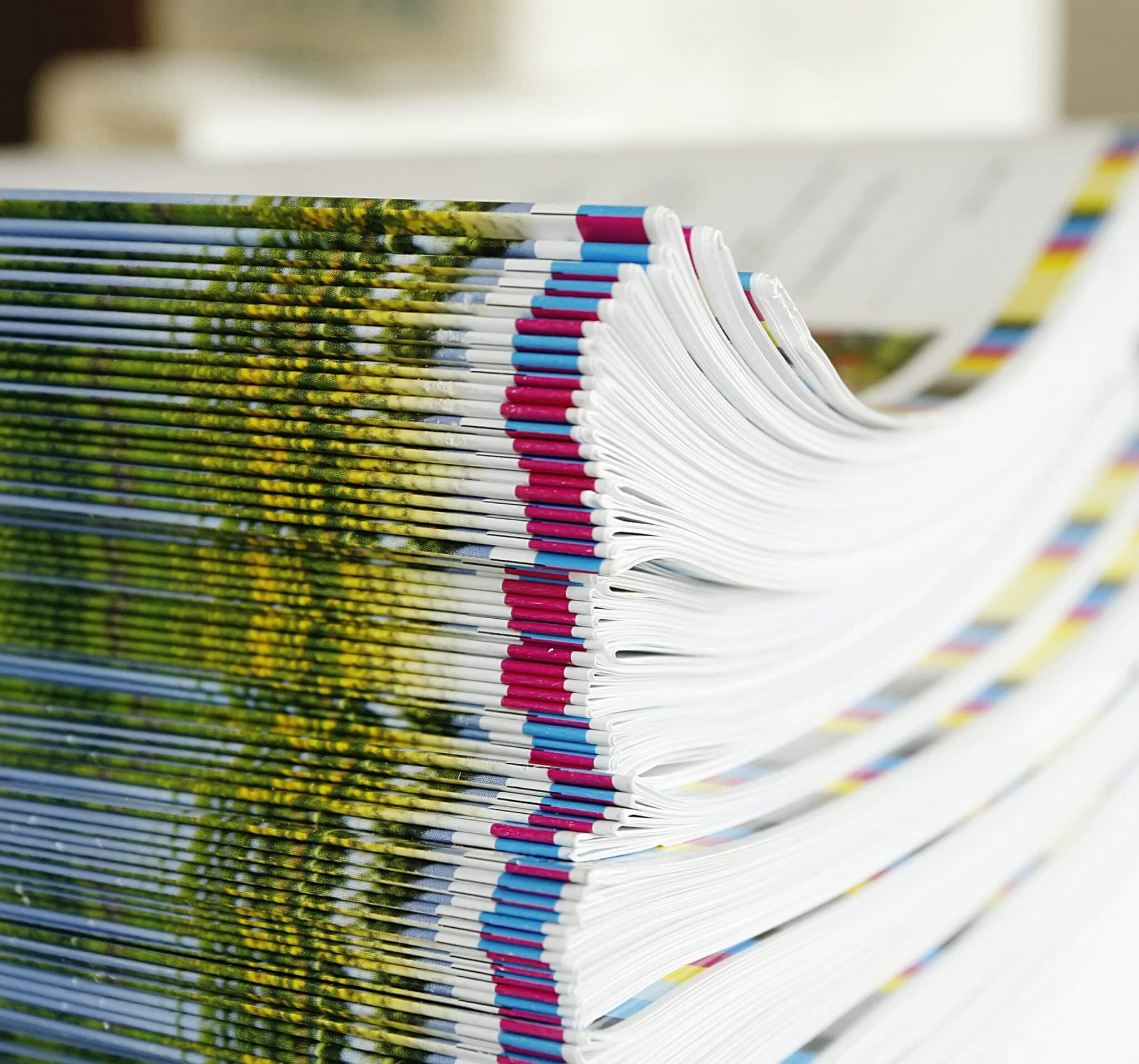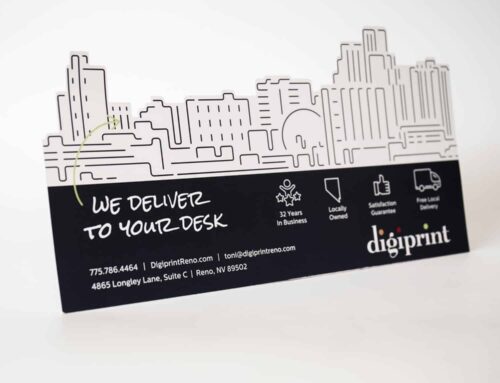The History of bookbinding goes back to the sixth century when monks started it to protect their hand-transcribed manuscripts. But modern bookbinding began with the advent of the printing press. Today, you can see different bookbinding methods.
But the two popular techniques include saddle stitch and perfect binding. Understanding the differences between these methods is essential for choosing the right binding style for your project. Don’t worry. This post will cover points like:
- What is perfect bound bookbinding?
- What is saddle stitch binding?
- Perfect bound book vs saddle stitch
- Characteristics, pros and cons, and applications of both binding methods
Let’s get started.

Table of Content
A. What Is Saddle Stitch Binding?
B. What Is Perfect Bound Book Binding?
A. What Is Saddle Stitch Binding?
Saddle stitch binding is a method that involves folding sheets of paper in half and stapling them together along the fold. This technique creates a booklet-like appearance with visible staples along the spine. The most common examples of a saddle stitch booklet include brochures, magazines, and catalogs.
1) Pros and Cons of Saddle Stitch Books
As you can imagine, saddle stitch books come with a few unique advantages and limitations. Knowing them can help you make an informed choice. Let’s start with the advantages.
Advantages
- Cost-Effective: Saddle stitch binding is a relatively affordable option. As a result, it is suitable for projects with budget constraints.
- Lay-Flat Capability: A saddle stitch booklet can lie flat when opened. It is excellent for binding books that you need to keep open while reading or referencing.
- Quick Turnaround: This binding method is efficient and requires minimal processing time. So, it is ideal for projects with tight deadlines. That’s one of the reasons why it is best suited for catalog design and printing.
Limitations
- Limited Page Count: This is a primary drawback of saddle stitch binding. The page count is often smaller. So, what page count is best for saddle stitch binding? Usually, you can add a maximum of 64 pages or 16 sheets of paper per booklet.
- Durability: Saddle stitch binding may not be as durable as other binding methods. In short, it may not be suitable for books that undergo heavy use or frequent handling. That’s why it is not be a best option for custom print binders.

2) Applications of Saddle Stitch Binding
Despite the limitations, you can see saddle stitch binding in different industries and applications. Here are a few applications you should know:
- Marketing and Advertising: You can see saddle stitch binding in brochures, product catalogs, and promotional booklets. It is cost-effective and versatile.
- Publishing: Some magazines, newsletters, and small booklets opt for saddle stitch binding due to its quick turnaround time and lay-flat capability.
3) Factors to Consider When Choosing Saddle Stitch Binding
When deciding on saddle stitch binding, consider the following factors:
- Page Count: Remember, the maximum page count is 64. Make sure your content fits within this page count. Or else, you might want to opt for perfect binding services.
- Intended Usage: This is also an equally important consideration. Check if your project requires a book that can lay flat. However, saddle stitch binding may not be the right choice if ample handling is involved.
B. What Is Perfect Bound Book Binding?
You are probably wondering, what is a perfect bound book?
Chances are you have seen plenty of them around. Perfect binding is a widely used bookbinding method. It involves gluing the pages together along the spine. It creates a smooth, flat spine with no visible staples or stitching.
Perfect-bound books are commonly used for novels, manuals, annual reports, and thicker publications. But before you ring up your printing services in Sparks, NV, understand the pros and cons of perfect bound books.
1) Pros and Cons of Perfect Bound Books
Although perfect bound books are popular, they come with advantages and a few drawbacks too. Let’s starts with the advantages they offer.
Advantages
- Professional Appearance: The absence of visible staples or stitching provides a clean and polished look. This look is best suited for formal publications such as books.
- Higher Page Count: Perfect binding allows a significantly higher page count than saddle stitch binding. So, it is suitable for thicker books.
- Durability: Perfect-bound books are more durable than saddle stitch books, especially when subjected to frequent use or handling.
Limitations
- Cost: The additional materials and labor involved in perfect binding may make it more expensive than saddle stitch binding. So, if you are on a budget, this may not be the right choice for your project.
- Lay-Flat Capability: Perfect-bound books do not lay flat when opened. In other words, these books don’t make a good choice for materials that require easy reference. Keep that in mind before hiring perfect binding services for your next project.

2) Applications of Perfect Bound Book Binding
You can find perfect bound bookbinding in:
- Publishing: Novels, manuals, academic textbooks, and annual reports often rely on perfect binding. It offers a professional look and durability.
- Corporate Materials: Business reports, proposals, and presentations may benefit from perfect binding to enhance visual appeal.
3) Factors to Consider When Choosing Perfect Binding
When considering perfect binding, take into account the following factors:
Page Count: Perfect binding allows for a higher page count. That’s what makes it suitable for thicker books or publications with extensive content.
Aesthetic Requirements: It is an excellent choice if you want a polished look. But make sure it aligns with the desired presentation of your book.
Hopefully, this answers your question – what is perfect binding, and when can you use it?
C. Perfect Bound Books Vs Saddle Stitch Books
As you can see, both book binding methods have unique benefits and drawbacks. Comparing them would give you an idea of when to use which bookbinding method. Here’s a glimpse into perfect binding vs saddle stitch binding.
- Binding Method: This is the main difference when comparing a perfect bound book vs saddle stitch book. Saddle stitch binding involves folding the sheets of paper in half and stapling them together along the spine. However, perfect binding requires gluing the pages together along the spine.
- Spine Appearance and Durability: Saddle stitch books have a visible staple along the spine, while perfect bound books have a smooth, flat spine without visible staples or stitching. As a result, perfect-bound books tend to be more durable than saddle stitch books.
- Page Count: Saddle stitch binding has a maximum page count of 64 pages or 16 sheets of paper. But perfect binding allows for a higher page count. That’s why it is suitable for thicker books.
- Cost: Saddle stitch binding is generally more cost-effective than perfect binding due to its easier process. However, perfect binding provides a more professional appearance.
- Turnaround Time: Saddle stitch binding requires less processing time. So, it offers a faster turnaround than perfect binding.
- Customization: Perfect binding offers better customization options, such as foil stamping and embossing. You can enhance the visual appeal of the book with these customizations.
- Content: Saddle stitch books are suitable for smaller publications like brochures, catalogs, and magazines. Perfect-bound books are ideal for thicker publications like novels, manuals, and annual reports.
D. Conclusion
When it comes to bookbinding, saddle stitch, and perfect bound books have distinct differences. They include a binding method, appearance of the spine, limitations on page count, cost, turnaround time, and customization options. Saddle stitch books are ideal for smaller publications, while perfect bound books are more suitable for thicker books and professional projects. In deciding between saddle stitch and perfect binding, you should consider the book’s purpose, desired visual appeal, budget, distribution requirements, and project timeline.
Are you looking for printing solutions? Digiprint Corporation is an expert in the field. We can provide you with the solution you need. Contact us now to learn more.





